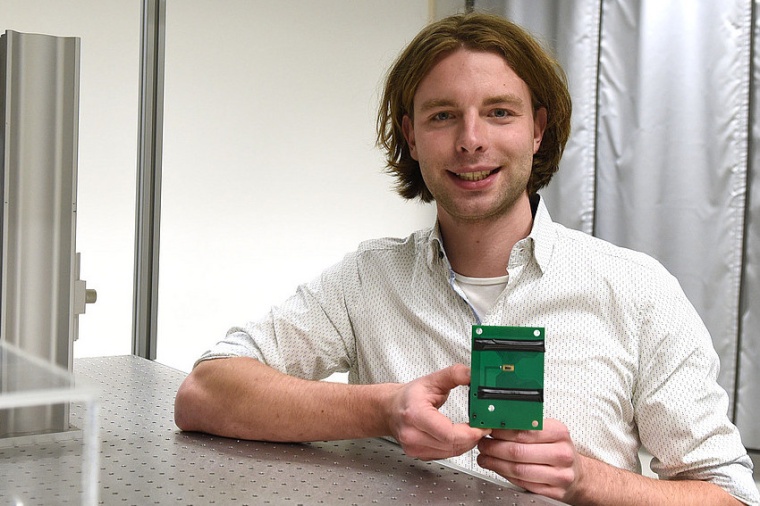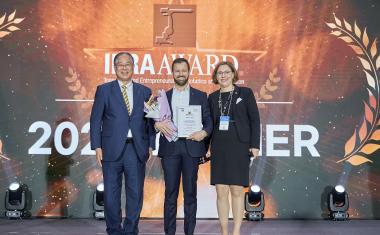Photonic chip generates and measures customized light fields for the first time
New device opens doors for many new applications in sensor technology, communication and imaging.
They send light, like tiny cars, along sophisticated paths across a silicon surface. And they do this on a chip the size of the tip of a small finger. In these waveguides, they have the light firmly under control. Researchers at the University of Graz have succeeded for the first time in operating a system that simultaneously fulfills two different functions on an integrated photonic chip: Not only can the incident light be measured, but a light field with specific properties can now also be generated in a targeted manner. The work is a milestone for the interaction of light fields and integrated optical circuits and opens doors for many new applications in sensor technology, communication and imaging.

From camera chips to microscopy to endoscopy for medical examinations, from self-driving cars to communication via satellites – optical sensors are the basic building blocks for future technologies. With their work, researchers at the University of Graz have now laid the foundation for further innovations. “Controlled by an electronic circuit, many properties of light can be made accessible on our integrated photonic chip, such as the distribution of the light field, its intensity and direction of oscillation. The special thing is that we can not only measure these properties, but also control them in order to generate a customized light field,” explains Johannes Bütow. The physicist is part of the “Optics of Nano and Quantum Materials - Structured Light, Sound and Matter” research group headed by Peter Banzer at the University of Graz.
The combination of various novel functions on a photonic chip, which is only a few millimeters in size, plays an important role in the further miniaturization of components in technology. Combined in one and the same platform to save space, optical circuits and functionalities of this kind enable numerous innovative applications. Together with Alexander Bergmann, Institute of Electrical Measurement and Sensor Systems at Graz University of Technology, Peter Banzer heads the recently opened Christian Doppler Laboratory for Structured Matter-based Sensing and, together with his team, is researching on further fundamentals and applications for structured materials and light fields. (Source: U. Graz)











